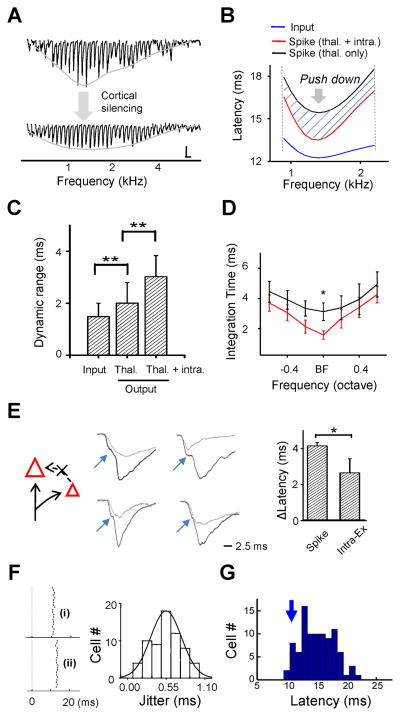Figure 5.
Contribution of thalamocortical and intracortical excitatory inputs to spike latency tuning. A, Excitatory responses to 70dB tones of various frequencies before and after cortical silencing in an example neuron. Gray curve depicts the tuning curve of synaptic strength. Scale: 100pA, 100ms. B, Smoothed tuning curves of thalamocortical input latency (blue), spike latency derived from the thalamocortical input alone (black) and that from the total excitatory input (red), within the estimated spiking frequency range. C, Average dynamic range of input latency, of spike latency based on the thalamocortical input only and that based on the total excitatory input. Bar = SD. **, p < 0.001, paired t-test, n = 10. D, Average tuning curves of integration time derived from the total excitatory input (red) and from the thalamocortical input only (black). Whisker = SE. * p<0.01, paired t-test, n = 10. E, Schematic drawing shows that input from other cortical excitatory neurons (represented by the smaller triangle) is eliminated after cortical silencing. Middle, average excitatory responses to BF tones before (black) and after (gray) cortical silencing in four example cells. Blue arrow points to the “kink” in the response trace before cortical silencing, which indicates the arrival of a fast intracortical excitatory input. Right, latency of the first spike and of the second excitatory component relative to the onset of excitation. Bar = SD. * p<0.01, paired t-test, n = 10. F, Left, raster plot of spike time in response to repeated 70dB BF tones (20 trials) for two example cells. Right, distribution of jitters of first spike latency for neurons tested. G, Distribution of first spike latencies within the 93 neurons recorded in the middle layers with cell-attached recordings.

